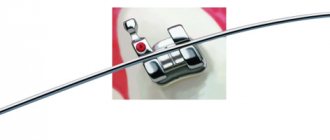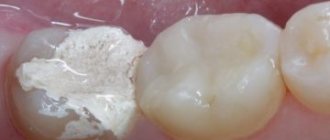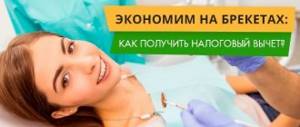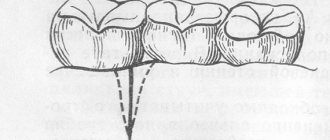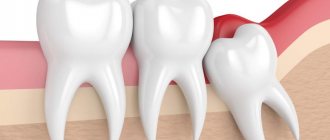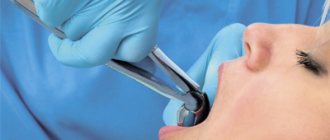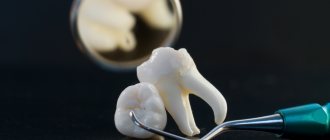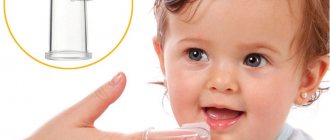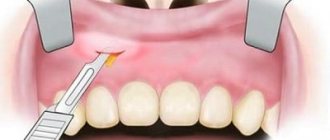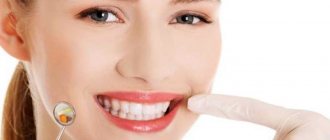Unfortunately, a diseased tooth cannot always be cured. Many patients, usually due to fear of the dental office, constantly postpone a visit to the doctor and thereby trigger the destructive processes occurring in the dental tissues to such an extent that it becomes impossible to save the tooth. Caries turns into pulpitis, which, if left untreated, over time develops into periodontitis, the complications of which are granulomas, fistulas, cysts, periostitis of the jaw, or, more seriously, jaw osteomyelitis. With all these pathologies, tooth extraction is sometimes the only correct solution.
Tooth extraction is always an unfavorable outcome for the patient. After all, after a tooth is pulled out, the patient faces the next problem – prosthetics. After all, the absence of even one tooth for a long time is very undesirable, since the distribution of the load on the teeth changes and the entire dentition is gradually deformed, and this threatens the development of periodontal disease, which can result in the loss of all teeth. Prosthetics are always associated with considerable financial expenses and, if we are talking about implantation, additional surgical interventions. That’s why doctors always try to make every effort to save the tooth.
How many teeth can be removed at one time?
However, tooth preservation measures are not always successful. And then the doctor prescribes tooth extraction. Sometimes several teeth at once are not subject to treatment. In this case, a patient who wants to quickly undergo an unpleasant procedure may have a completely natural question about whether it is possible to pull out several teeth in a row at once. So, how possible is it to remove two or more teeth during one visit to the dentist?
Content
- There are two types of extraction
- How many teeth can be removed at once?
- Conclusion
A diseased tooth cannot always be treated. Patients often put off going to the dentist for various reasons. Such actions trigger destructive mechanisms in dental tissues.
Due to lack of treatment:
- Caries transforms into pulpitis;
- Further - into periodontitis, which is accompanied by cysts, fistulas and granulomas;
- The likelihood of developing periostitis of the jaw increases.
In case of high risks, the only correct solution is tooth extraction.
Such an outcome is always undesirable for the patient, because the next stage becomes another problem - the need for prosthetics.
Doctors always make every effort to save teeth, but this is not always possible. It happens that several teeth must be removed at once.
PROMOTION
Inexpensive tooth extraction
from 1000 rub.
General recommendations
High-quality compliance with the postoperative period will help to avoid complications and unpleasant consequences. Let's take a closer look:
- With such manipulation it is necessary to use a double dosage of an anesthetic substance. Therefore, it is not recommended to drive any transport during the day.
- At the end of surgery, time 4 hours. During this time, try not to eat food, then start with liquid meals.
- For 7 days, do not go to the bathhouse or lie in a hot bath.
- Limit physical activity to a minimum, try not to lift weights more than 1 kilogram.
- Rinse only from the third day as prescribed by the doctor.
- In the first two days, you can take painkillers if you experience discomfort. The specific drug and dosage are prescribed by the attending physician.
- If bleeding occurs, pain continues for more than three days, or other problems arise, visit your doctor immediately.
- If you take any medications on a regular basis, be sure to tell your doctor. Some pills may be limited for a couple of days, as some groups of medications thin the blood.
There are two types of extraction
Planned removal is prescribed if:
- A diseased tooth cannot be cured;
- The patient has a growth pathology - the tooth is positioned incorrectly, injures the tissues in the oral cavity or interferes with nearby teeth;
- The crown of the tooth is completely destroyed.
Emergency extraction is performed if the patient:
- Purulent periodontitis – acute inflammation develops in the periosteum;
- There is a process of bone destruction due to jaw osteomyelitis.
Signs of periostitis are:
- Throbbing sharp pain;
- Temperature increase;
- Edema.
In such cases, you cannot take measures on your own. Rinsing and warming up will not only not help, but will also worsen the situation.
Modern anesthetic drugs allow tooth extraction to be performed without pain. Anesthesia can be carried out in stages: first, the surface of the gums is covered with gel, and only after that the main anesthetic is administered.
Removal varies in difficulty. In any case, the tissues of the oral cavity are injured and complications are possible. Manipulation requires the professionalism of a dentist.
What is required from the patient to prevent complications after extraction
After the tooth is pulled out, the dentist places a tampon soaked in a drug into the hole that stops the bleeding and speeds up the healing of the wound. The patient should spit it out after twenty minutes. Drinking is permissible one hour after removing the tampon, and eating at least two hours after extraction.
Hard, hard and hot foods are extremely undesirable on the day of extraction, as they can injure already damaged tissues. It is best to consume only liquid and soft foods. Also, on the day of tooth extraction, you should not drink alcohol or smoke.
To avoid accidentally washing away a blood clot covering the wound, you should not rinse your mouth on the day of surgery. Instead, it is better to use baths made from chlorhexidine solution.
You can brush your teeth after surgery, but you should not touch the side where the tooth was pulled out with the brush.
If the operation was not complicated, then the patient does not have to see the doctor on the second day of the postoperative period. In a complex case, the doctor himself tells the patient when he should come to him for examination.
How many teeth can be removed at once?
On the one hand, the traumatic nature of extraction imposes certain restrictions on the number of teeth removed in one visit to the doctor.
On the other hand, each case is unique; only an experienced doctor can make a prediction in this matter, based on the results of the examination.
According to established practice, only one, or maximum two, teeth are removed during one visit. In reality, there are no specific restrictions on this issue, and removing several teeth at once is possible.
Such a need may arise, for example, during upcoming prosthetics. The doctor is guided by the following factors.
- Patient's health status. For hypertensive patients, for example, multiple removals are extremely undesirable. The same applies to patients taking blood thinners. After the operation, a hole is left that the blood clot must fill, and such patients may experience prolonged bleeding.
- Anesthetic drugs. The doctor assesses what medications and in what quantities will be needed, and what restrictions on their administration there are. If it is not possible to qualitatively anesthetize all the necessary areas of the jaw, there will be several operations. Adjacent teeth can usually be removed in one visit.
- Type of anesthesia. If the manipulation is carried out under general anesthesia, all teeth intended for this purpose are removed. Since anesthesia is a serious stress for the body, the operation is carried out after careful preparation.
- Comfort for the patient. Psychologically, a person must be prepared for surgery. This doesn't always happen. The removal of two or more teeth is associated with difficulties in eating and chewing. But a person may prefer to have several teeth removed at once.
- Complexity of the procedure. If you have to remove a tooth in parts, multiple extractions are not performed due to increased tissue damage. The doctor tries to minimize trauma.
- Urgency. During an inflammatory process, it is better to remove all problematic teeth at once in order to block the spread of the inflammatory process.
What complications can there be after extraction?
Even with the removal of just one tooth, there is a risk of complications. If you pull out several teeth in a row at once, the risk of undesirable consequences increases. What complications can arise after tooth extraction surgery?
Complications can arise both during the extraction itself, for example, due to the negligence of the dentist or due to the complexity of the procedure, and in the postoperative period. The most common complications are:
- alveolitis;
- bleeding from the socket;
- paresthesia;
- deviation of the teeth that were previously adjacent to the now removed tooth from their natural position due to loss of support.
- perforation of the bottom of the maxillary cavity.
Alveolitis is an inflammatory process that has developed in the hole from an extracted tooth. Usually this pathology occurs in people with weakened immune systems. A characteristic sign of this complication is pain, which may appear several days after the operation. In addition, the patient may have a fever and signs of general intoxication - weakness, headache, malaise. A dirty gray coating with an unpleasant odor forms on the hole.
Treatment of this disease consists of local and general antibacterial therapy. In mild cases, simple antiseptic treatment of the hole is sufficient. Sometimes patients are prescribed laser or physiotherapeutic procedures.
Bleeding from the socket can appear either immediately after extraction or after some time. The causes of their occurrence can be both local (physical trauma, inflammatory processes) and general (hypertension, blood diseases, a number of infectious diseases). To eliminate bleeding, stitches are placed on the gums, blood vessels are tightened and hemostatic agents are used. The patient must adhere to standard recommendations after tooth extraction to avoid complications.
Paresthesia is injury to the nerves during extraction. This problem manifests itself as numbness of the tongue, lips, cheeks and chin. Usually this condition goes away within a maximum of two days. In some cases, vitamin therapy and injections of galantamine and dibazole are required.
Changing the angle of inclination of the teeth located next to the socket leads to disruption of the chewing function, distortion of the bite, and disruption of the natural distribution of the load. All this can provoke the development of periodontal disease. Therefore, after extraction, it is necessary to install a prosthesis in place of the extracted tooth as soon as possible.
Perforation of the bottom of the maxillary cavity occurs due to the specific anatomy of the patient and in the presence of chronic inflammation, leading to a decrease in the thickness of the bony septum between the nose and oral cavity. This problem can arise when extracting the upper chewing teeth. When a communication is formed between the oral and maxillary cavities, water and food products will enter the sinus, which will lead to the development of an inflammatory process. Therefore, the resulting passage must be urgently eliminated.
Injuries during extraction
During tooth extraction, the patient may suffer the following injuries:
- Injury to nearby teeth.
- Fracture of the tooth being removed - the result is a complication of the operation and the risk of further complications.
- Incomplete tooth extraction – when a fragment of the tooth root remains in the jaw, which can provoke the development of an inflammatory process.
- Fracture of the lower jaw bone - elderly patients are at greatest risk of receiving such an injury.
- Tearing out a piece of the alveolar process - in this case, artificial restoration of the bone is required.
How soon can the next tooth be removed?
In addition, when pulling out diseased baby teeth in children, the doctor may mistakenly remove the germ of a permanent tooth, mistaking it for the root of a baby tooth.
What do we do after removing the eights?
We evaluate the possible damage that figure eights could cause to neighboring teeth. If the adjacent teeth are deformed, then the pathology may spread like a domino effect, and here it is already necessary to carry out systemic orthodontic treatment aimed at correcting the disturbed bite.
The most gentle and aesthetic type of dental correction today is aligners. The site provides a lot of information on aligners, but I would like to mention one undeniable advantage, namely, the patient can see the result of his treatment with aligners without even starting it! How so, you ask? The answer is simple - all future treatment of the patient is calculated using modern computer technology. The example below shows a real clinical case, a patient with crowded teeth caused precisely by the pathological effect of “eights” on neighboring teeth.
Let's explore the issue
I read all the available information on this topic and did not find a single clear explanation.
The only thing that really helped me were the forums. The issue of female insatiability attracts the attention of many users.
Everyone tries to show off their intelligence and sense of humor, exaggerating their own capabilities.
Naturally, this information cannot be taken as reliable, but it is possible to recreate a general picture that is close to reality.
Despite heated debates and discussions, everyone agreed that women are more resilient than men and they do not care at all about the number of partners in continuous sex.
Especially if for a young lady having sex is an integral part of the job.
Some ordinary girls claim that they have withstood up to 10 partners, but I would argue not about the quantity, but about the quality of the sexual intercourse itself.
Many girls insist that sex should only be with one man. This is, of course, a matter of desire and education.
As for me personally, I allow group sex, but only as entertainment, and I do not intend to share my woman with a dozen guys.
So, from discussions on the forums, let's get to the point. First of all, you need to look into the details of this question, since there are many nuances on which the answer depends.
Additional hygiene products
Experts recommend not limiting yourself to a regular toothbrush and toothpaste and using additional products daily (see photo) to maintain proper oral cleanliness. Among them are:
Dental floss (floss). Necessary to clean the spaces between teeth from plaque. Flosses are made from synthetic materials or silk. Dental floss can be regular or waxed. In the first case, it will be divided into several threads when brushing your teeth. They clean teeth better due to the larger contact area. Wax-coated threads do not separate and are able to easily penetrate between the contact surfaces of the teeth. They are recommended for children, as well as people who are just starting to use this hygiene product. In addition, flosses differ in cross-section, which can be round, ribbon, flat or voluminous. This variety allows you to individually choose dental floss based on the anatomical structure of each person’s dentition.
- Irrigator. It is a special device that creates a thin stream of water under high pressure. This pressure is selected so as to effectively clean the surface of the teeth from plaque without injuring the soft tissues. On the contrary, the irrigator has a massage effect on the gums, relieves inflammation and eliminates bleeding. The device is indispensable for people who have braces or other bulky dental structures that are difficult to clean.
- Mouth rinses. Some people believe that the only purpose of mouthwashes is to freshen your breath. In fact, these hygiene products have a much wider spectrum of action. They may contain antiseptic and anti-inflammatory components, minerals, agents that help relieve bleeding gums, etc. Based on the set of these active substances, all rinses are divided into hygienic and therapeutic and prophylactic.
- Brushes and tongue scrapers. They help remove plaque and microorganisms from the surface of the tongue. For high-quality and complete oral hygiene, it must also be cleaned regularly. This procedure will be of particular benefit to patients who smoke, as well as those suffering from diseases of the upper gastrointestinal tract, accompanied by bad breath.
- Cleaners. These devices are designed both for cleaning interdental spaces and can be used for cleaning fixed dentures, orthodontic appliances, etc. They can be made in the shape of a cylinder or a cone. In addition, they differ in size. The service life of one such product is about 5 days.
- Dentifrice. It is a good preventative against caries. It has a polishing and whitening effect, helping to remove stains from tea, coffee, and cigarettes. The question is often asked: is it harmful to brush your teeth with tooth powder? There is only one answer: no, it is not harmful. The decline in its popularity occurred mainly as a result of a marketing policy focusing on the promotion of oral hygiene products (pastes, rinses) of large international companies.
- Chewing gum. It is an excellent solution for mechanical removal of food residues. At the same time, you need to know that you can chew gum only after eating for 10 minutes, no more. You also need to make sure that there is no sugar in its composition. Chewing gum should not be used by patients with phenylketonuria, children with baby teeth, during orthodontic treatment, pregnant women and nursing mothers.
Using a regular brush in combination with these products will allow you to better clean the oral cavity of plaque. For an unprepared person, such an abundance of hygiene products can lead to difficulties in choosing the most suitable ones. In such situations, it is necessary to contact a dentist who will select everything necessary for high-quality cleaning of the oral cavity, taking into account the characteristics of a particular patient.
Proper Teeth Brushing Technique
The dentition contains many so-called hard-to-reach areas in which food debris collects and plaque accumulates. To remove it as well as possible, you need to brush your teeth properly. The following rules can help with this:
- Toothpaste must be applied in sufficient quantities, but without fanaticism - the length of the strip should be approximately one centimeter.
- Using swiping movements from the gums, we clean the chewing teeth from the cheek side.
- We brush the front teeth in a circular motion and from side to side.
- We perform 20 movements on each section and then move on to the next one.
Using a toothbrush, you should thoroughly clean your teeth on all sides, not forgetting your tongue, because bacterial plaque accumulates on it too. Finally, rinse your mouth with clean water.
You can get a quality consultation on wisdom teeth in your city
I want to check my eights!
Treat or remove eights?
Now regarding orthodontic treatment and wisdom teeth. Believe me, it is very unpleasant for us doctors, as well as for patients, to make radical decisions. But there are good reasons! These are your own stories. Stories of patients who underwent treatment with braces as teenagers, achieved excellent results and...
All the beauty of straight teeth, especially the lower incisors (you just started to enjoy a beautiful smile) - it disappears at 20 and beyond. It is when most of us fully develop these “eights”. Two, three and even four years of therapeutic “torment” to correct crooked teeth, transform them into a beautiful/sweet/courageous smile, as they say, down the drain... Yes, yes - the only option to become the owner of beautiful teeth again is repeated orthodontic treatment. It doesn’t matter whether it’s aligners or braces again, the important thing is that there is a good saying: forewarned is forearmed! No one is immune from mistakes and relapse.
Our body is beautiful and magical in that it almost always adapts and compensates for almost any pathology. Therefore, the “eights” cut through with difficulty and subsequently deform
there are very important teeth in front!
How much sex should you have?
This question worries many, including scientists.
The latter, in particular, are trying to figure out how much sex people need to feel happier. The answer seems to have been received in 2015. Then a large-scale study was published: Sexual Frequency Predicts Greater Well-Being, But More is Not Always Better, in which more than 30 thousand people took part. It turned out that couples who had sex at least once a week were happier than those who had sex less often. What's interesting is that those who had sex more than once a week did not become even happier because of it. It turns out that the norm is once every seven days.
We could have stopped there if it weren’t for another major study, Sex and the Pursuit of Happiness: How Other People’s Sex Lives are Related to our Sense of Well-Being, published a year earlier. According to his results In sex, happiness hinges on keeping up with the Joneses, CU-Boulder study finds, the percentage of happy people among those who made love 2-3 times a week was still higher than among those who had sex was once a week.
According to experts, such contradictory data may indicate that there is no general norm in sex at all.
Ian Kerner
sex consultant, psychotherapist, writer
What works for some couples doesn't work for everyone. For some, once a week is too much, but for others it’s really not enough.
This thesis is confirmed by another recent study: Does Increased Sexual Frequency Enhance Happiness? . In the study, half of the test couples were asked to have sex twice as often as usual. But this did not make them any happier. On the contrary, these people's libido decreased and they began to receive less pleasure from intimacy.
What is the conclusion? Have sex as much as you and your partner want. Only you can determine your own standard. Although over time it may change.
Do we need wisdom teeth?
I use the only compound word. In biology there is such a concept as RUDIMENT
- a part of the human body that has lost its function in the process of evolution. The most famous rudiment is the vermiform appendix of the intestine or appendix. So - a large number of doctors and people believe that there is nothing superfluous in the body and wisdom teeth can serve a person at an older age, when the loss of basic teeth occurs and the doctor can use figure eights to install, for example, a bridge.
Unfortunately, in most cases this is impossible and even wrong!
Most people simply do not have room in the jaw for eighth teeth, and Mother Nature begins to mock them (and, naturally, us doctors) in every possible way: painful eruption, irregular shape, incorrect size of the tooth itself, poorly developed root system - all of the above leaves no chance for the correct use of “eights”.
How wisdom teeth are formed
Unlike other teeth, the rudiments of wisdom teeth are formed not during intrauterine development, but at 3–5 years, when the child’s body is preparing to replace milk teeth with permanent dentition. At this age, you can determine the number of future eights (and there can actually be from one to four). But at this age, it is not yet possible to detect any possible developmental pathologies.
It becomes more or less clear a little later, the crown part of the wisdom teeth begins to form. The formation process starts in a child at about 12 years of age, but the development of the root part of the figure eight takes several more years and can continue even after tooth eruption. Considering that the most common age for the appearance of wisdom teeth is 18–25 years, the eruption of eights occurs already in adulthood. It’s not for nothing that I said earlier the phrase “actually from one to four,” since approximately 10–15% have no eights at all. That is why it is normal to consider the number of teeth in an adult to be from 28 to 32. Those are wisdom teeth, right? How unwise they treat us and make puzzles!
When is it advisable not to remove wisdom teeth?
There are situations when the “seventh” or “sixth” chewing teeth must be removed. And in this situation, a wisdom tooth that has grown correctly may still be useful. It will become one of two supports for the future bridge. However, in this case, a healthy sixth (or fifth) tooth will suffer, because it will have to be treated for an abutment crown.
Now a little about sad things
. 10-15 years will pass, the bridge will “work out” its required operating time. And sometimes it will no longer be possible to insert an implant - the atrophied jaw bone under the bridge will not allow it: in the absence of teeth, any person develops edentulous bone tissue. Thus, on the horizon of life there appear removable jaw dentures and newfangled gels that make them easier to wear.
Now a little about the positive
.
In such situations, you can initially consider dental implantation in specialized
medical centers, where they will help restore bone volume and take control of the dental situation.
Why do you need to brush your teeth?
Why do you need to brush your teeth several times every day?
The oral cavity is an ideal place for the rapid reproduction and activity of pathogenic bacteria. Here, optimal conditions are created for various types of microorganisms:
- Temperature close to 37 °C.
- High humidity.
- Availability of a food source (leftover food).
- Lack of sunlight, which is a source of ultraviolet radiation that kills harmful bacteria.
This is why microbes multiply quickly in the cavity and mouth and feel very comfortable there. Among the representatives of microflora there are both beneficial microorganisms and pathogenic ones, which, as a result of active division, can provoke the development of various serious diseases, such as stomatitis and caries. Since thorough brushing of teeth eliminates a significant part of these microorganisms, their negative effects are minimized. For this reason, you need to brush your teeth regularly and do it correctly.
What happens if you don't brush your teeth for a long time?
As noted earlier, pathogenic microorganisms feel quite comfortable in the oral cavity. Together with food particles, they populate the entire surface of the oral cavity (enamel, mucous membranes). As a result, over time, so-called dental plaque forms. It turns out to be a vicious circle when bacteria first select comfortable conditions for their existence, and then have a negative impact on the environment by releasing waste products. Thus, toxic metabolic products cause both destruction of tooth enamel and inflammation of the mucous membranes, for example, gingivitis and a more serious disease - periodontitis (can be a complication of gingivitis). This pathology is characterized by the formation of pathological pockets between the tooth and gum tissue. They are also the entrance gates for infection that affects the tooth root and ligamentous apparatus. Severe periodontitis is characterized by exposure of the neck of the tooth, loosening and loss of teeth. Treatment of such cases is only surgical and requires a lot of time.
The golden rule of medicine says: it is easier to prevent any disease than to treat it later. This statement also applies to dentistry. High-quality and regular teeth cleaning will help you avoid many problems that will not only require time to eliminate, but will also be accompanied by significant material costs.
What types of toothbrushes and toothpastes are there?
In any store or pharmacy you can see several varieties of toothbrushes and toothpastes. Such diversity was not invented without reason, because these funds should be selected taking into account the characteristics of a particular person.
Toothbrushes differ in their degree of hardness:
- The soft bristles do not injure the gums and are therefore suitable for people with increased sensitivity and patients with periodontal disease.
- Hard brushes provide good plaque removal, but can damage your gums.
- Medium-hard bristles are universal and suitable for most people.
If you don’t know which brush you need, your dentist will help you choose it after he conducts an examination.
What toothpaste should you use to make your teeth white? How do different pastes differ from each other?
Toothpastes may contain abrasives (help remove plaque and slightly whiten the enamel), fluoride, anti-inflammatory components and other ingredients. Therefore, it is necessary to choose a toothpaste based on the oral condition of a particular person. For example, various pastes can be used to eliminate bleeding gums, their inflammation, or to reduce sensitivity. If you have such problems, you need to select a certain type of toothpaste that your dentist can recommend.
Let's see how wisdom teeth led to crowded teeth
And how crowded teeth are eliminated with Star Smile aligners
The video shows how the 3D setup is done. I am commenting on the video, orthodontist Alexander Spesivtsev, clinical director of Star Smile, a doctor with many years of experience in the successful use of aligners in orthodontic practice. To restore straight dentition, the wisdom teeth themselves—the eights—had to be removed. At Star Smile, or rather in the clinics of its partners (more than 70 cities in Russia), any treatment begins with diagnosis and drawing up a virtual setup. The doctor takes photographs of the patient’s face, dentition, as well as x-rays and dental casts. Using special software, the obtained data is processed and a three-dimensional model of the patient’s dental system is obtained. And this already allows you to calculate the trajectory of tooth movement, treatment time, and the required number of sets of aligners. Also, the final result of the treatment will be visualized - the patient will be able to evaluate the aesthetics of the smile after treatment. Patients really like this approach - they can see their future smile, their straight teeth. The forecast of a 3D setup when straightening teeth with aligners comes true in almost 100% of cases. You see, this is completely different from correcting a “blind” bite, as is usually the case with braces. Everything is clear here, without any guesswork or assumptions.
Gevorkyan Oscar Vladimirovich
Candidate of Medical Sciences, Oral and Maxillofacial Surgeon, Central Scientific Research Institute, Scientific Consultant Star Smile “ If you are faced with questions
:
- To remove or not to remove wisdom teeth?
- How dangerous is it to remove wisdom teeth?
- When do wisdom teeth interfere with orthodontic treatment?
- and most importantly, is it possible to avoid the removal of “eights”?
Feel free to contact the doctors at Star Smile, they will help you understand this sometimes complex, but very important life problem for many.
Do not delay the decision in order to avoid possible complications in the future.” Since the Star Smile company is represented in all federal districts, large and medium-sized cities of Russia and interacts with many clinics and orthodontists, we offer you the opportunity to undergo a free consultation with high-quality orthodontists in your city , where you can discuss the problem of wisdom teeth and determine the optimal solution for you. To do this, you need to fill out the form below, a Star Smile medical specialist will contact you and help you by scheduling a consultation at a convenient time or providing your doctor’s contact information.
Don’t put off the problem of wisdom teeth “for later”!
So what do we do with eights?
The moral of this story is this: trust qualified and educated doctors, not kind and humane “neighborly” advice. Be wise. Especially at such crucial moments in life, when wisdom teeth make themselves felt. And in general, I wonder who was the first to call them “wisdom teeth”?
Moreover, an interesting point from medical practice: if you (what if?) decide to remove the eights, it is not a fact that they will be removed for you. The reason is simple - wisdom teeth must be removed exactly according to indications. A normal doctor will never remove a healthy tooth just because you want it.
You have decided to remove your wisdom teeth. How traumatic is this?
If the wisdom tooth has grown normally, its roots are not intertwined, removal usually takes place without any complications. The edges of the tooth socket after extraction are often not even sutured.
What is most important after removing the figure eight is to allow the socket of the just removed wisdom tooth to heal. Quite a big wound.
What is absolutely impossible to do?
You should not rinse vigorously, even with such seemingly beneficial solutions as chamomile or calendula.
What needs to be done.
To get rid of food debris, you need to carefully take water into your mouth and do short oral baths without intensive rinsing. Instead of water, you can use a solution of chlorhexidine, miramistin or analogs specially sold in pharmacies - they disinfect the oral cavity. And so - for at least three days. If this recommendation is neglected, the hole may become inflamed. Then the dentist prescribes treatment with medications, including antibiotics.
What if the roots of an insidious wisdom tooth are intertwined or fused?
Unfortunately, in this case complications cannot be ruled out - soft tissues may be damaged. If an inflamed tooth is removed, in rare cases the neurovascular bundle (!) of the lower jaw is injured. In this case, separate treatment may be required.

